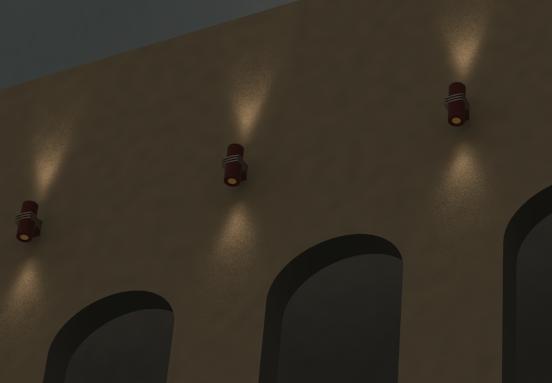
Revit ies file download - above told
IES Lights QuickStart
This page provides a step-by-step tutorial for IES lights in V-Ray for Revit.
Page Contents
Introduction
Inhis third tutorial about using lights in V-Ray for Revit, we’ll go over using IES lights. If you haven’t gone over our earlier two QuickStart tutorials on lighting in V-Ray for Revit, check them out for a quick foundation on interior and exterior lighting.
To follow this tutorial, you will need to have the V-Ray for Revit plugin installed.
This tutorial page is a companion that goes with the QuickStart video posted on our YouTube channel and is available here:
Tutorial Assets
To download the files used in this tutorial, please click on the button below.

Tutorial Steps
Open the Example Scene
Open the IES.rvt project, which you can download trough the link above. In this tutorial, Revit 2017 is being used, however you will be able to use this project with Revit versions 2015 through 2017.

With the project loaded, click the V-Ray tab. We’ll need to import some settings, so click Settings.

Click on Sharing and click Load Settings.

Choose the IES.xml file from the downloaded assets and click Import Selected to import the settings into the project. This imports a few V-Ray for Revit settings like EV value for the camera and V-Ray materials settings.

Render this project: set your Current View to Render and keep the Quality at Draft and the Resolution at 800x600. Turn on Artificial Lights, and make sure the Environment Light is off and the Exposure Value is set to 8.5.

If some of your geometry shows up as Fuchsia, click on Settings and then click Paths. From the Path Settings choose Add and then browse to the location of theIES folder that you downloaded on your machine, to make sure the project loads all supporting files properly.
We’re focusing work on the sconce lights here on the wall. Right now, they are using a generic IES file that comes with Revit. Close the VFB, and select one of these sconce lights.

How to change your IES light file
Click on Edit Type.

At the bottom you’ll see the Photometric Web File is set to generic.ies.

Click on the ellipses (...) icon for Photometric Web File to be able to change the IES profile.

In the file dialog, select TLAE1A21.ies from the IES folder that was originally installed with Revit and then click OK.
Your path to the IES folder will vary based on your installation of Revit. Here are some examples:
C:\ProgramData\Autodesk\RVT 2017\IES
C:\ProgramData\Autodesk\RVT 2016\IES
C:\ProgramData\Autodesk\RAC 2015\IES

You’ll notice that the shape for the photometric light has changed in the project.

Open the VFB again, and select a region around the lights.

Render with V-Ray to see the new IES file being used as shown below. The geometry of the sconce is blocking some of the photometric web, which is causing some harsh shadows at the edges of the pattern on the wall below the sconces, which you may be perfectly fine with.

However, lighting manufacturers usually account for the housing of the lights in their IES profiles, so if you want to have the IES profile not clipped by the geometry of the light fixture, we’ll need to make sure the light shines through the geometry, just like we did in our first lighting QuickStart video.
IES files and working with Geometry
Open the Material Browser.

Click the Show Material Mapping option, select Mapped from the pulldown menu.

The Sconce material is listed. Expand the UI with the arrow icon show on the left below, and edit the material through the Material Editor by clicking the icon shown on the right below.

In the Advanced tab, scroll to the bottom for the Options section and uncheck the Cast Shadows box. Now save your material through the File menu in the Material Editor.

Select a new region in the VFB, as shown below.

Click Render with V-ray, you’ll see that the geometry of the light’s housing is no longer blocking any of the photometric web.

IES files are supported, and V-Ray for Revit supports editing the options for the light source in the family as well. Close out of the Material Browser and the V-Ray Rendering Progress windows.
Editing the IES light properties
Click on the sconce family and then choose Edit Type to edit the family.

Scroll to the bottom. All of the parameters under the Photometrics section are supported in V-Ray rendering.

With the Initial Intensity set to 0.00 lm, as seen above, the intensity of the light is coming directly from the IES file itself. If we want to dim the light we can adjust it in this window.
Click on the 0.00 lm to open the Initial Intensity window and then enter a value of 100 lm, it will override the IES file’s intensity with this new, lower setting.

We can also change the temperature of the light, by clicking on the Initial Color.

Change the Color Preset to Custom, and setting the Color Temperature value to 4000 Kelvin. The dialog shows you a preview that our light is now warmer than before. Click OK and OK again.

Render the selected region in the VFB again and the IES has been adjusted to be warmer and dimmer than the before.

For the final render, set the Quality to High, Resolution to 1152x864 and click Render with V-Ray.

As you can see, using IES files with V-Ray for Revit is pretty straightforward, as is adjusting the light profiles to make them look the way you’d like.


0 thoughts to “Revit ies file download”